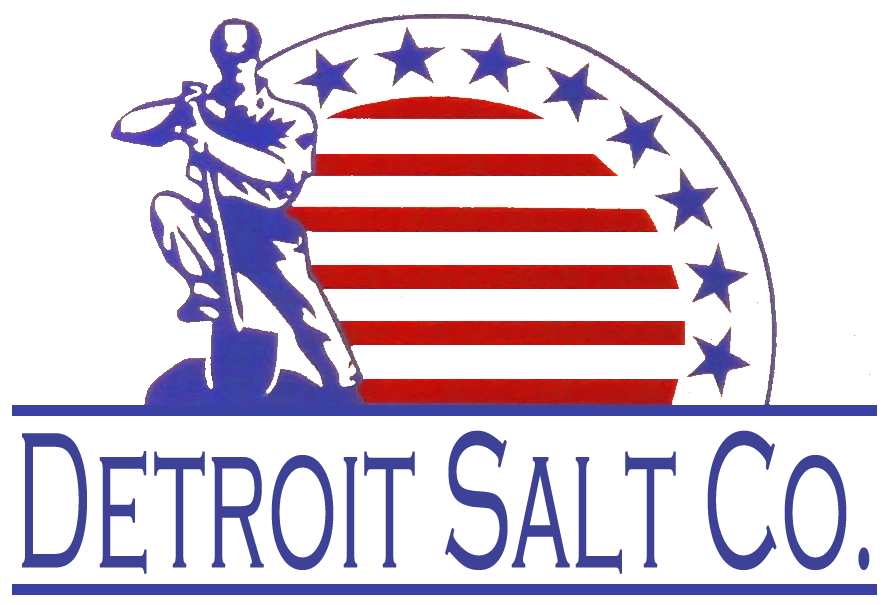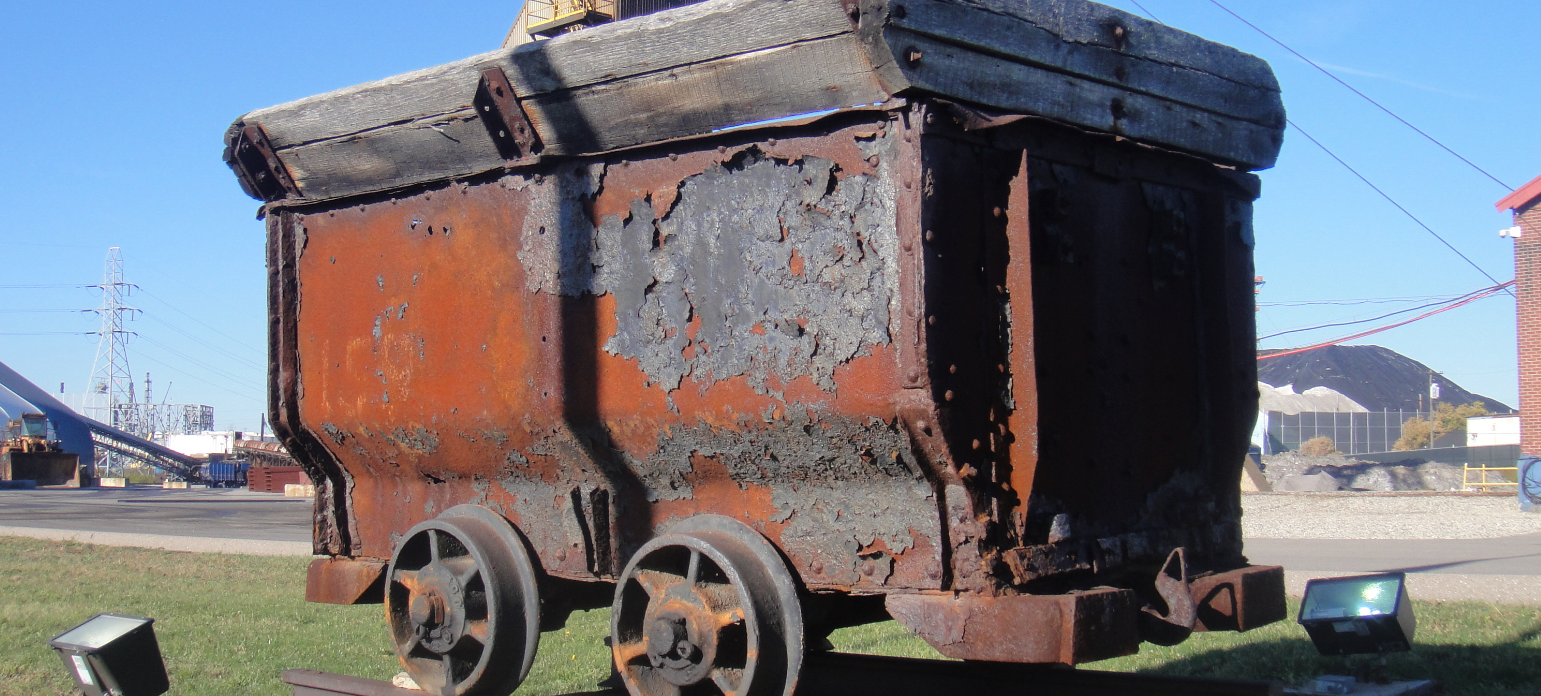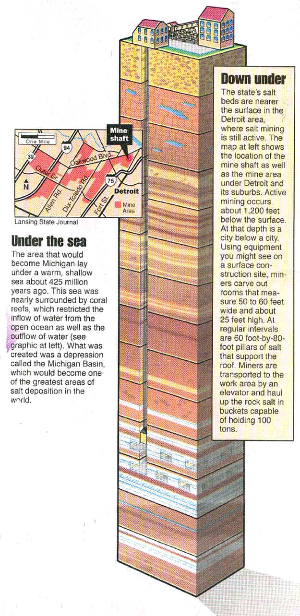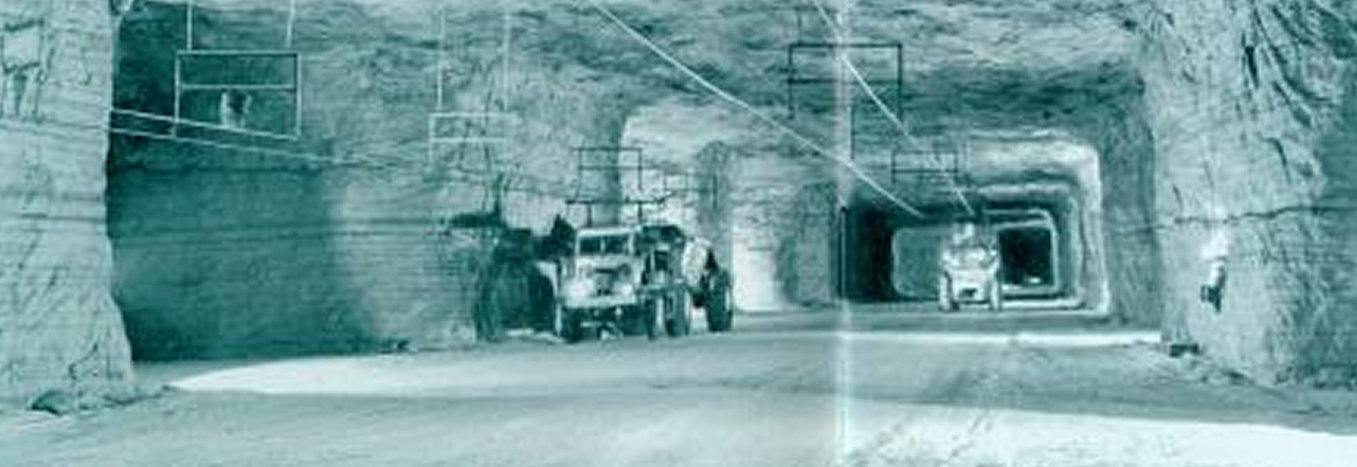Interesting Detroit Salt Mine Facts
How deep is the mine?
Approximately 1160 ft. straight down
If the mine were a building, how would it compare to other buildings? What does 1160 ft. look like?
If the mine shaft were a building, it would rank among the world's tallest buildings. It would be close to the Empire State Building, which is 1260 ft. Locally in Detroit, the tall part of the Renaissance Center plus the Fisher Building on top of it would be approximately 1160 feet.
Is it cold or hot down there?
The mine temperature stays around 60°Fahrenheit (16° Celsius) year round, so it's warmer than the surface in the winter and cooler than the surface in the summer.
What is the room and pillar method of mining?
The room and pillar method of mining is a way to excavate material while supporting the ceiling. This method leaves a grid that is like a map for mining engineers to follow and use in their planning.
When did they start mining?
In 1906, the Detroit Salt and Manufacturing Company began sinking a shaft, which was completed in 1911 when the current layer of salt that we mine in now was reached.
Why did they start mining?
Salt is a mineral that has many uses. In the late 1800's and early 1900's, today's refrigerators had not yet been perfected, thus people used salt to preserve food. Salt is also used in many tanning processes for leathers and is instrumental in the making of glass.
Who were the miners?
The original miners were men from other mine works, probably from the Upper Peninsula. Many were new immigrants to the US, particularly from Italy, Scandinavia, England, Poland, Czechoslovakia, and Ireland.
What are some mining terms?
Miners, like other professions, have words and phrases that are unique to their business. Here are some terms that you use everyday that have different meanings below ground:
Advance - Mining in the same direction, or order of sequence; first mining as distinguished from retreat.
Auger - A rotary drill that uses a screw device to penetrate, break, and then transport the drilled material.
Back - The roof or upper part in any underground mining cavity.
Bed - A stratum of mineral or other sedimentary deposit.
Berm - A pile or mound of material capable of restraining a vehicle.
Bit - The hardened and strengthened device at the end of a drill rod that transmits the energy of breakage to the rock. The size of the bit determines the size of the hole. A bit may be either detachable from or integral with its supporting drill rod.
Brow - A low place in the roof of a mine, giving insufficient headroom.
Cap - A miner's safety helmet.
Cage - In a mine shaft, the device, similar to an elevator car, that is used for hoisting personnel and materials.
Car - A railway wagon, especially any of the wagons adapted to carrying coal, ore, and waste underground.
Collar - The term applied to the timbering or concrete around the mouth or top of a shaft. The beginning point of a shaft or drill hole at the surface.
Deposit - Mineral deposit or ore deposit is used to designate a natural occurrence of a useful mineral, or an ore, in sufficient extent and degree of concentration to invite exploitation.
Drift - A horizontal passage underground. A drift follows the vein, as distinguished from a crosscut that intersects it, or a level or gallery, which may do either.
Entry - An underground horizontal or near-horizontal passage used for haulage, ventilation, or as a main way; a coal heading; a working place where the ore is extracted from the seam in the initial mining; same as "gate" and "roadway," both British terms.
Face – The exposed area of an ore bed from which minerals are being extracted.
Feeder - A machine that feeds mined material onto a conveyor belt evenly.
Flight - The metal strap or crossbar attached to the drag chain-and-flight conveyor.
Floor - The bottom or underlying surface of an underground excavation.
Grizzly - Course screening or scalping device that prevents oversized bulk material form entering a material transfer system; constructed of rails, bars, beams, etc.
Head frame - The structure surmounting the shaft which supports the hoist rope pulley and often the hoist itself.
Hoist - A drum on which hoisting rope is wound in the engine house, as the cage or skip is raised in the hoisting shaft.
Horseback - A mass of material with a slippery surface in the roof; shaped like a horse's back.
Intake - The passage through which fresh air is drawn or forced into a mine or to a section of a mine.
Lamp - The electric cap lamp worn for visibility.
Outcrop – Ore that appears at or near the surface.
Pillar - An area of mineral left to support the overlying strata in a mine; sometimes left permanently to support surface structures.
Plan - A map showing features such as mine workings or geological structures on a horizontal plane.
Rib - The side of a pillar or the wall of an entry. The solid material on the side of any underground passage. Same as rib pillar.
Shaft - A primary vertical or non-vertical opening through mine strata used for ventilation or drainage and/or for hoisting of personnel or materials; connects the surface with underground workings.
Skip - A car being hoisted from a slope or shaft.
Timber - A collective term for underground wooden supports.
Trip - A train of mine cars.
Working face - Any place in a mine where material is extracted during a mining cycle.




